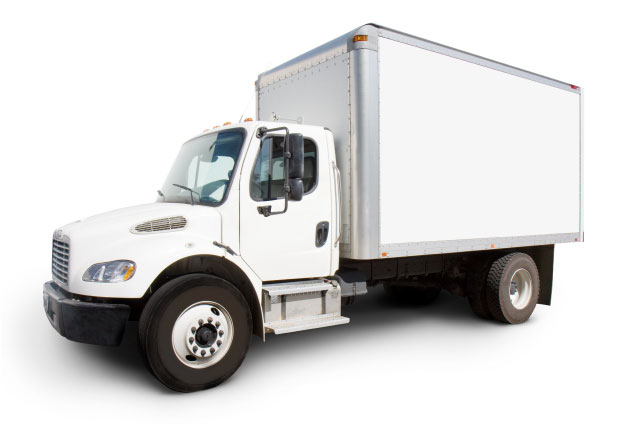Keeping Your Freezer Safe and Sound While in Storage
Posted on 23/06/2025
Keeping Your Freezer Safe and Sound While in Storage: A Comprehensive Guide
When it comes time to store your freezer, whether for a short-term move or long-term storage, you want to ensure that your appliance remains in excellent condition. Keeping your freezer safe and sound while in storage is essential to preserve its lifespan, avoid expensive repairs, and ensure it's ready for use when you need it again. In this article, you'll discover the best tips and techniques for freezer storage, how to avoid damage and odors, and why proper preparation matters.

Why Proper Freezer Storage is Important
Your freezer is an investment--and whether it's a standalone model or part of a refrigerator combo, mishandling during storage can lead to major issues. Not only does improper storage increase the risk of mold, mildew, and rust, but it can also damage the appliance's delicate parts, compromise seals, and reduce efficiency when plugged back in. By taking care of your fridge or freezer while in storage, you'll maximize its lifespan and save money in the long run.
Pre-Storage Checklist: Preparing the Freezer
Before you store your freezer, proper preparation is crucial. Never just unplug and store! Here's an essential checklist to follow:
- Unplug and Defrost: Unplug the freezer at least 24-48 hours before storage. This allows enough time for any ice to melt and the unit to reach room temperature.
- Remove All Contents: Take everything out and clean drawers, shelves, and baskets thoroughly. Food residue left behind can lead to mold and pests.
- Deep Clean and Dry: Wash interior and exterior surfaces with a mixture of warm water and baking soda. Dry every surface completely to prevent any moisture build-up that can lead to mildew.
- Remove Doors or Secure Them Open: Keep the door ajar during storage to allow air circulation (if possible). If your storage location requires doors to be closed, place a box of baking soda inside to help absorb any remaining odors.
- Disassemble Removable Parts: Remove drawers, shelves, and trays to clean and wrap them separately. This gives extra protection and prevents breakage in transit.
- Address the Water Line: If your freezer has an ice maker, make sure to disconnect and drain the water line to prevent leakage and avoid mold growth.
Expert Tip:
Always transport your freezer in the upright position to protect the compressor's delicate components. If the freezer must be laid down during a move, make sure to let it stand upright for at least 24 hours before plugging it in again.
Choosing the Right Storage Space for Your Freezer
The location you select for storing your freezer can significantly impact its longevity. Here are a few key characteristics of the best places for safe freezer storage:
- Climate-Controlled Environment: For long-term or off-season storage, select a climate-controlled storage unit to protect against extreme temperature fluctuations that can cause condensation and rusting.
- Indoor vs. Outdoor Units: While outdoor storage is cost-effective, it does expose your freezer to potentially harsh weather conditions. Whenever possible, opt for indoor storage for added security and temperature stability.
- Flat, Level Surface: Place the freezer on a level floor to maintain proper structural integrity. If the floor is uneven, shimming the appliance will help keep the compressor and seal in top condition.
- Dry, Clean Area: Moisture is the enemy of electrical appliances. Ensure the storage area is dry and free from leaks.
Should You Store a Freezer Plugged In or Unplugged?
Always store your freezer unplugged. Leaving it plugged in without regular use not only wastes energy but can also pose a fire risk. Ensure all cords are secured and not crushed to avoid electrical issues when you need the appliance again.
Packing and Securing Your Freezer for Storage
To prevent accidental dings, scratches, or water damage, it's vital to use the appropriate supplies and methods.
- Use Protective Covers: Cover the appliance with a breathable tarp or moving blanket. Avoid plastic covers that can trap moisture, as this increases risk of mold and corrosion.
- Wrap Removable Parts: Bundle and label shelves and drawers in protective wrap and keep them inside the freezer or in a marked container for easy reassembly.
- Secure the Door: Use a bungee cord or rope to keep the door loosely ajar to maximize airflow.
- Keep It Elevated: If storing the freezer in a garage or basement, raise it slightly off the ground with pallets or blocks to allow airflow and prevent water damage from puddles or flooding.
- Moisture Control: Place moisture-absorbing packets or plain charcoal inside the freezer to help control humidity and keep unwanted odors at bay.
Tips for Long-Term Freezer Storage
If keeping your freezer safe while in storage for many months or years, remember these additional safety steps for added protection:
- Check Regularly: If the storage location is accessible, visit every few months to ensure the space remains dry, and the freezer itself is free of moisture or odors.
- Update Your Insurance: Many storage facilities offer additional coverage for appliances. Consider adding insurance for peace of mind.
- Document the Condition: Before storing, take photos and record the appliance's working condition for reference if you need to file any claims.
- Pest Prevention: Place rodent deterrents around the storage unit and ensure there are no food traces to attract pests.
Dealing with Different Types of Freezers
Upright vs. Chest Freezer Storage
The basics of storing upright and chest freezers are similar, but there are a few differences to consider:
- Upright Freezer: These models are more likely to develop odors if the door stays closed and air circulation is limited. Make extra sure to prop the door open slightly.
- Chest Freezer: These typically have many crevices and can trap more moisture, so spend extra time drying after cleaning. Place a moisture absorber at the bottom.
Moving Your Freezer Back from Storage
When it's time to take your freezer out of storage, proper steps will ensure a smooth restart:
- Inspect Thoroughly: Check for external and internal damage, moisture, or pests. Remove and discard any moisture or odor absorbers.
- Allow Time to Settle: If the freezer was transported on its side, let it stand upright for a full 24 hours before plugging in so that lubricants and refrigerant balance properly.
- Test Run: Plug in the appliance and set the thermostat to the recommended setting. Monitor for unusual noises or problems before adding any food.
- Reinstall Components: Reassemble drawers and shelves, ensuring everything is dry and cleaned.
Common Issues and How to Prevent Them
Understanding potential pitfalls will help you avoid costly mistakes and ensure safe freezer storage. Here are *common freezer storage challenges* and expert solutions:
- Mold and Mildew Growth: Caused by leftover moisture. Solution: Dry thoroughly before storage and keep the door ajar for airflow.
- Unpleasant Odors: Lingering food smells can intensify during storage. Solution: Use baking soda or odor-absorbing materials and deep-clean before storage.
- Pest Infestation: Occurs if food debris remains inside. Solution: Clean meticulously and use pest deterrents around the storage unit.
- Compressor Issues Post-Storage: Can be caused by improper transport or plugging in too soon. Solution: Always store upright and allow time for fluids to settle prior to restarting.
- Exterior Rust or Corrosion: Result from high humidity or water leaks. Solution: Store in a dry location, use breathable covers, and elevate off damp floors.

Frequently Asked Questions About Freezer Storage
- How long can I store a freezer without damaging it?
- With proper preparation and the right environment, a freezer can be stored safely for several years.
- Can I store my freezer in cold or hot environments?
- Extreme temperatures are not recommended. Climate-controlled storage is best to avoid stress on seals, plastic components, and electronic parts.
- Should I remove the door for long-term storage?
- If possible, keep the door ajar or remove it--especially if you're storing in a location with poor airflow--to prevent mold and mildew.
- Is it safe to store a freezer outside?
- Outdoor storage is possible but exposes the appliance to moisture, temperature extremes, and pests. Always protect with covers and elevate off the ground.
Conclusion: Ensuring Your Freezer's Longevity
Keeping your freezer safe and sound while in storage requires careful planning and attention. By thoroughly cleaning, drying, and protecting your appliance, you will prevent costly repair issues and maintain its efficiency for years to come. Whether you're dealing with an upright or chest freezer, solo unit or refrigerator combo, these tips will help you keep your freezer in optimal condition. Remember to select a suitable storage space, use protective covers, and maintain airflow to mitigate common risks.
With just a bit of time and diligence, you can ensure that your freezer is ready to serve your household as soon as it comes out of storage--fresh, safe, and fully functional.
For more tips on appliance storage and maintenance, bookmark this guide or share with a friend who's preparing for a big move!
```




